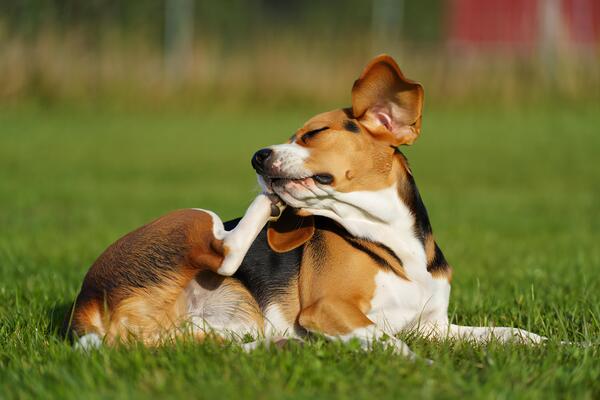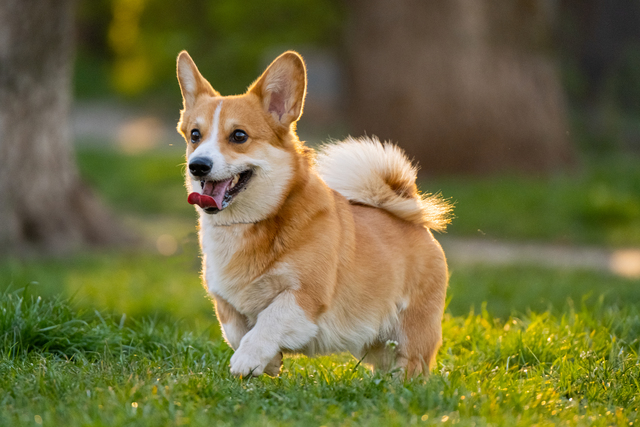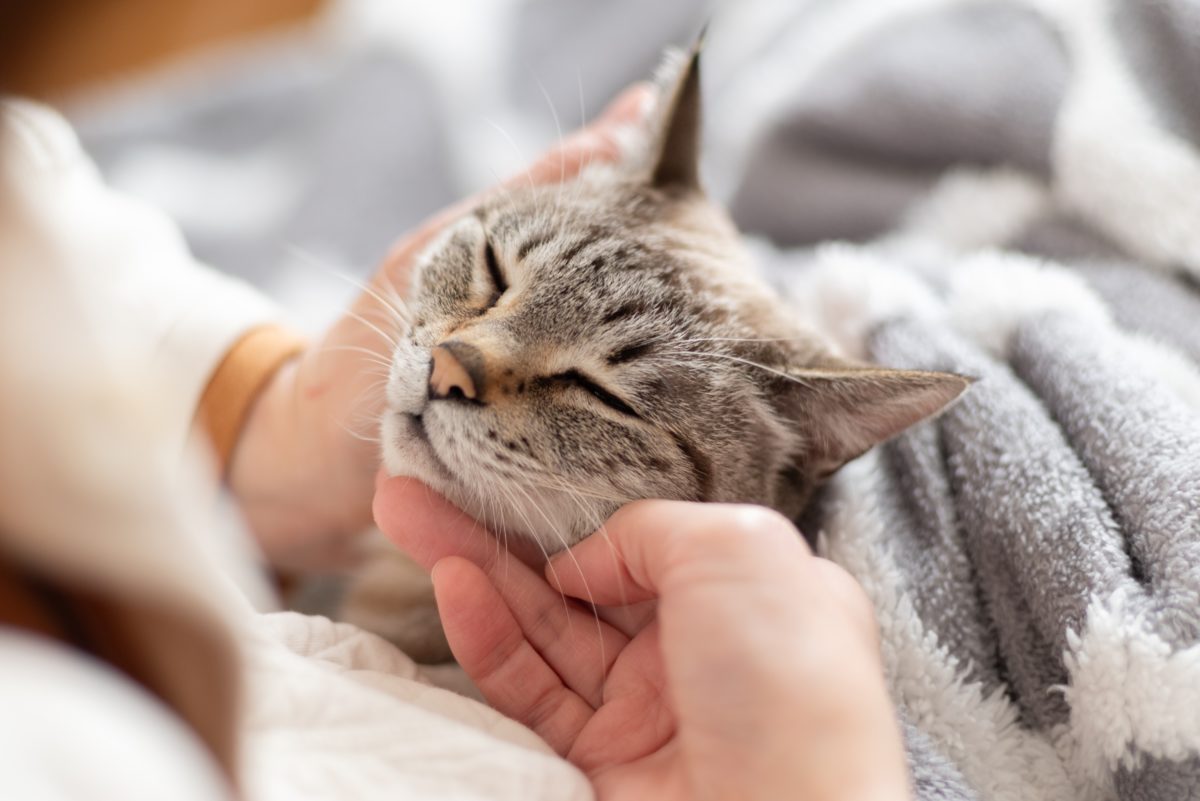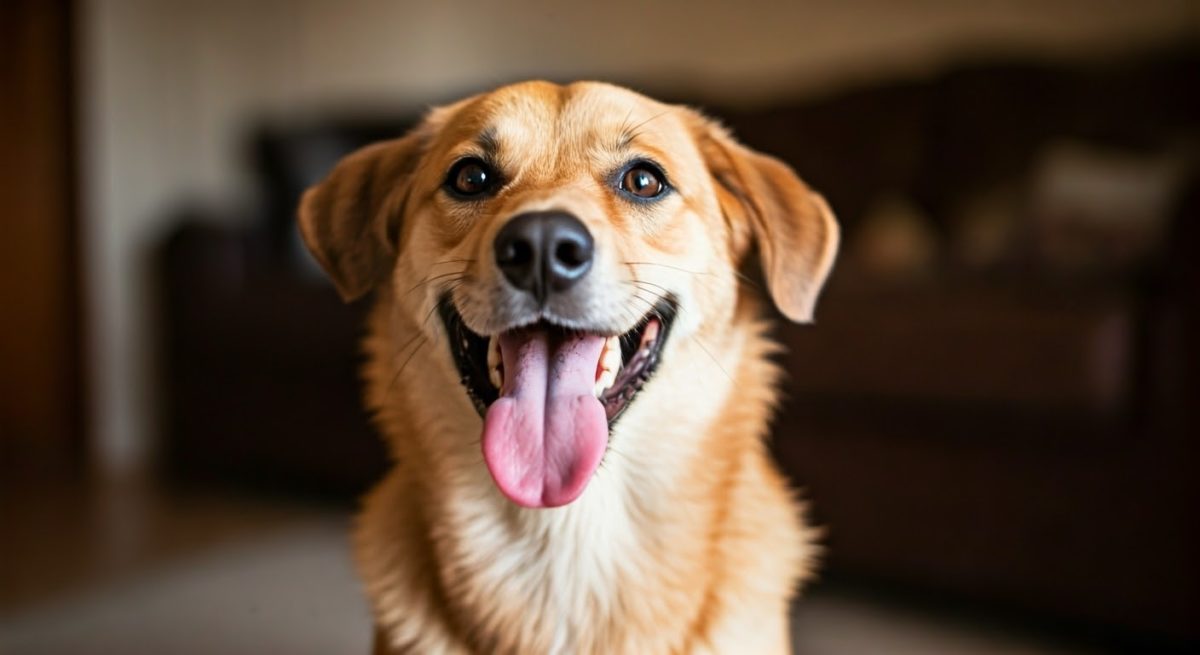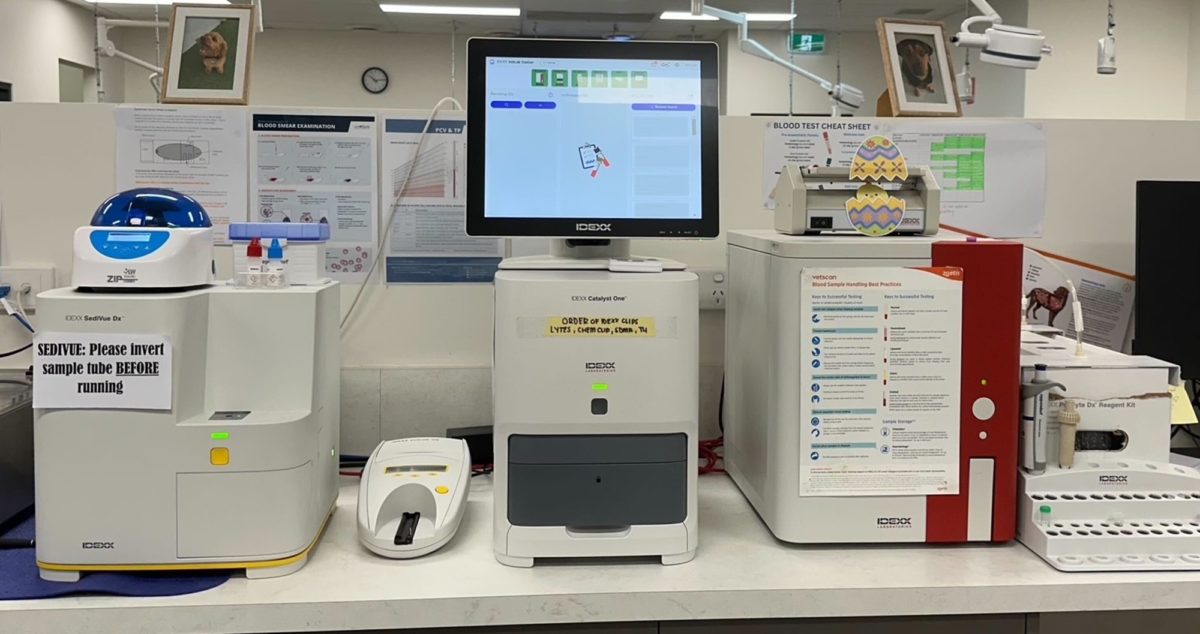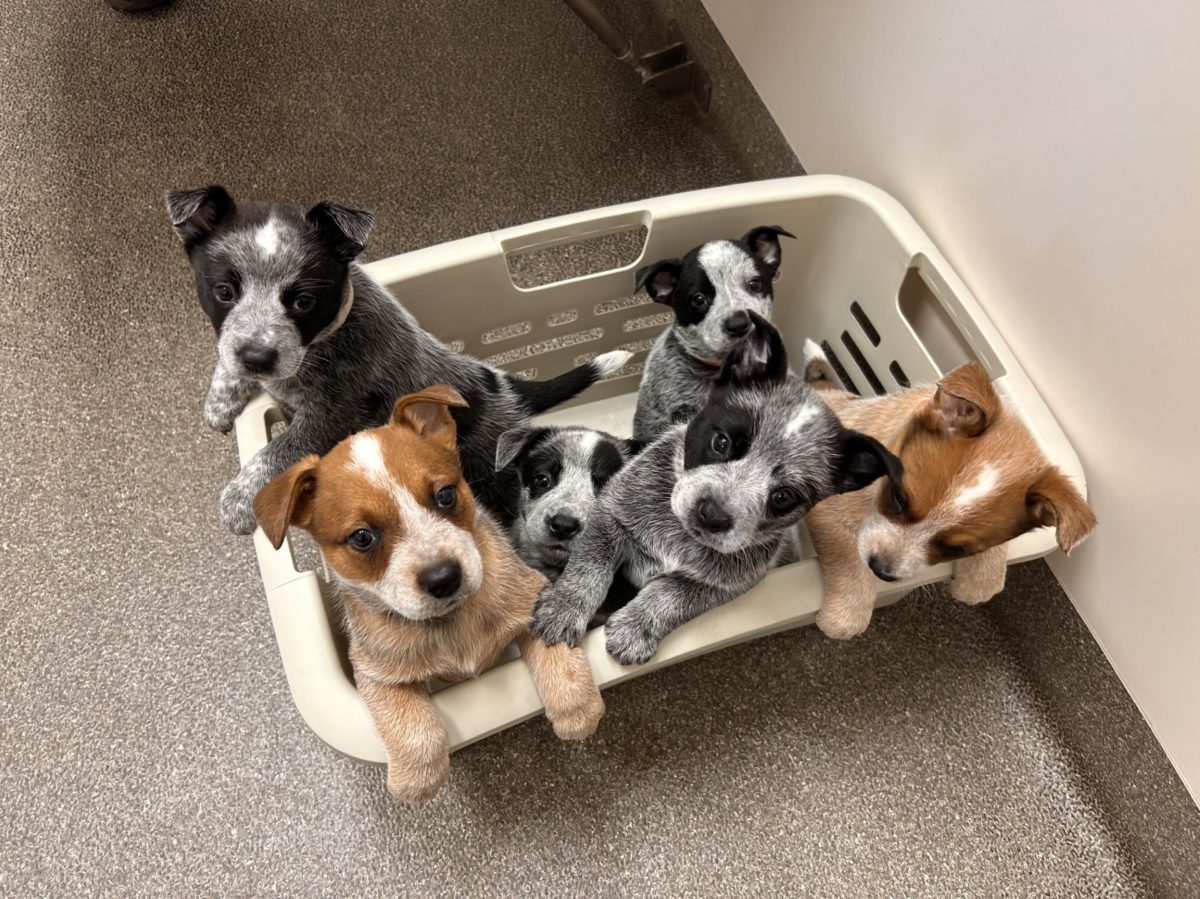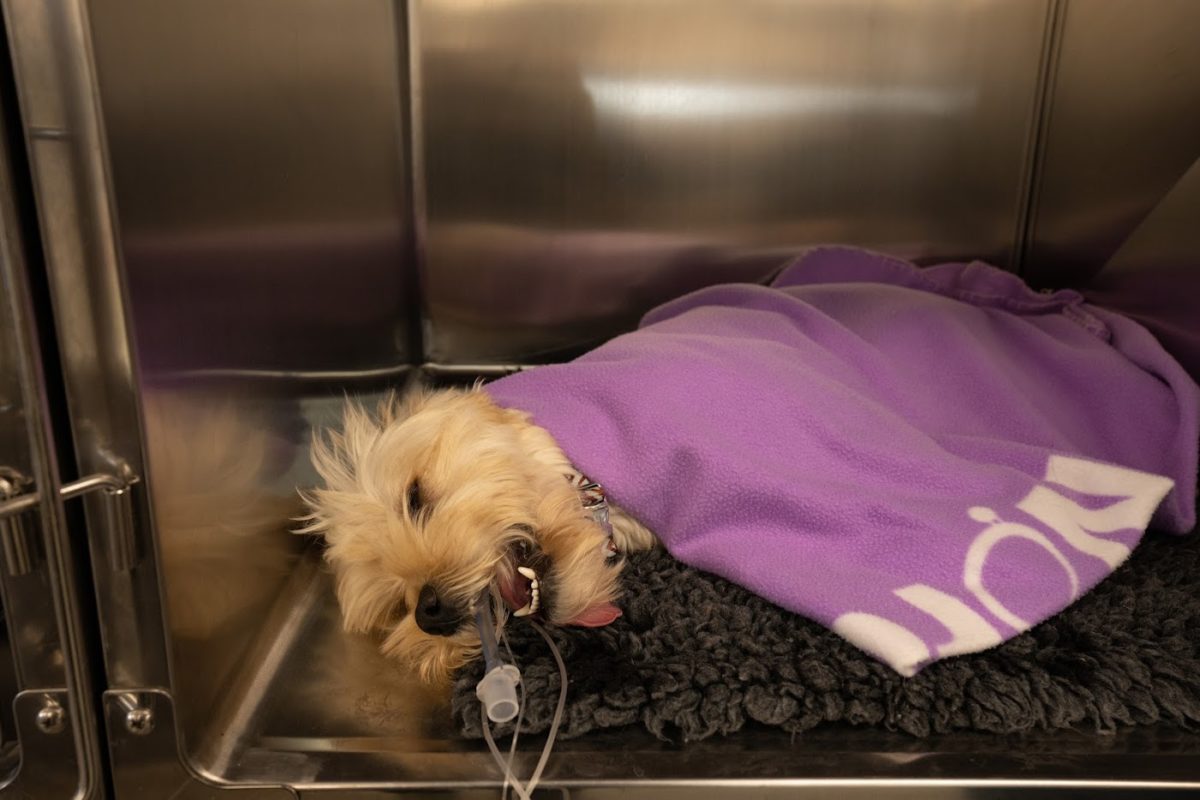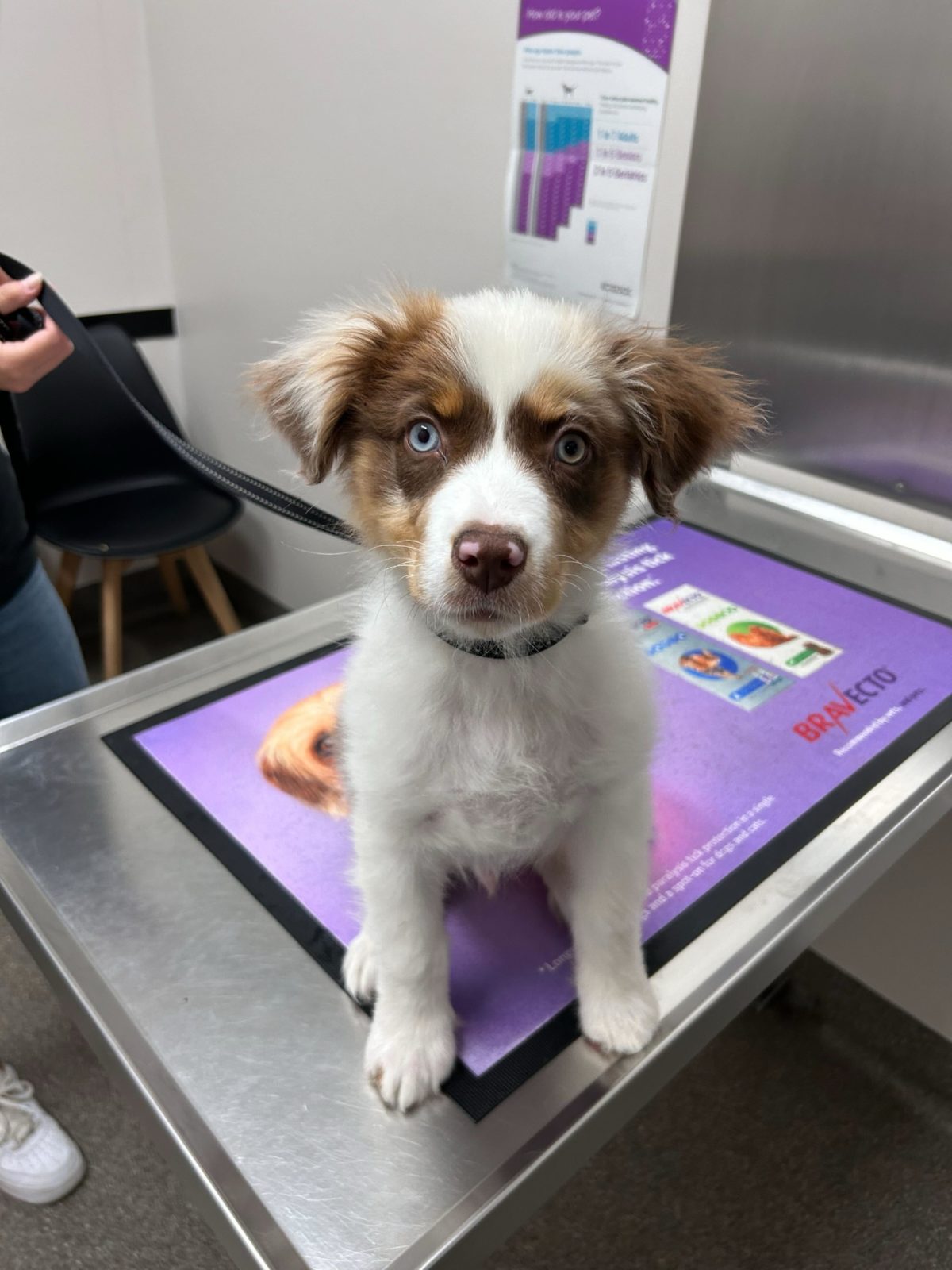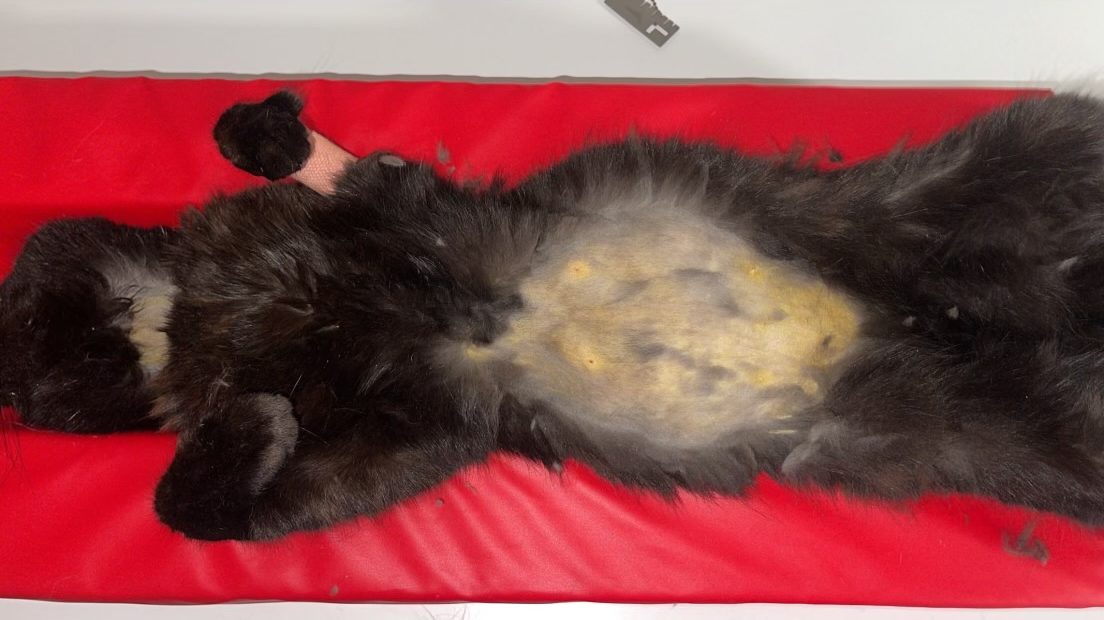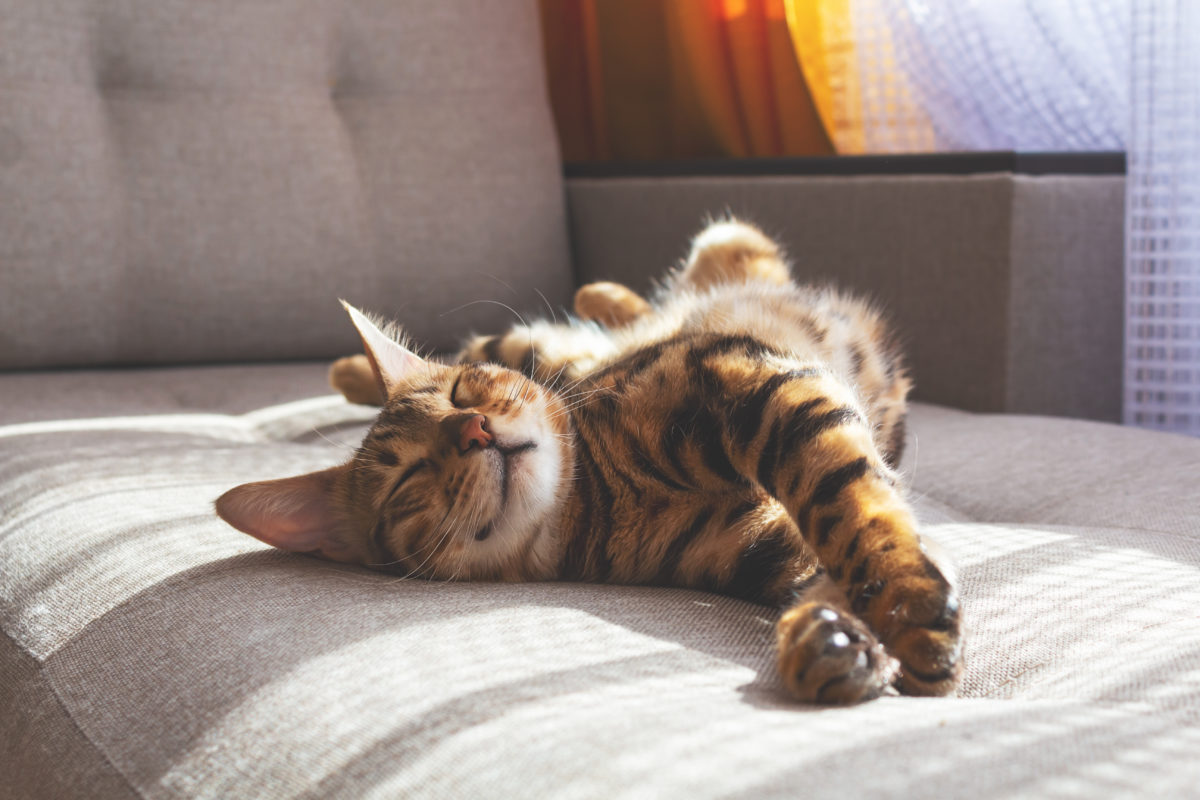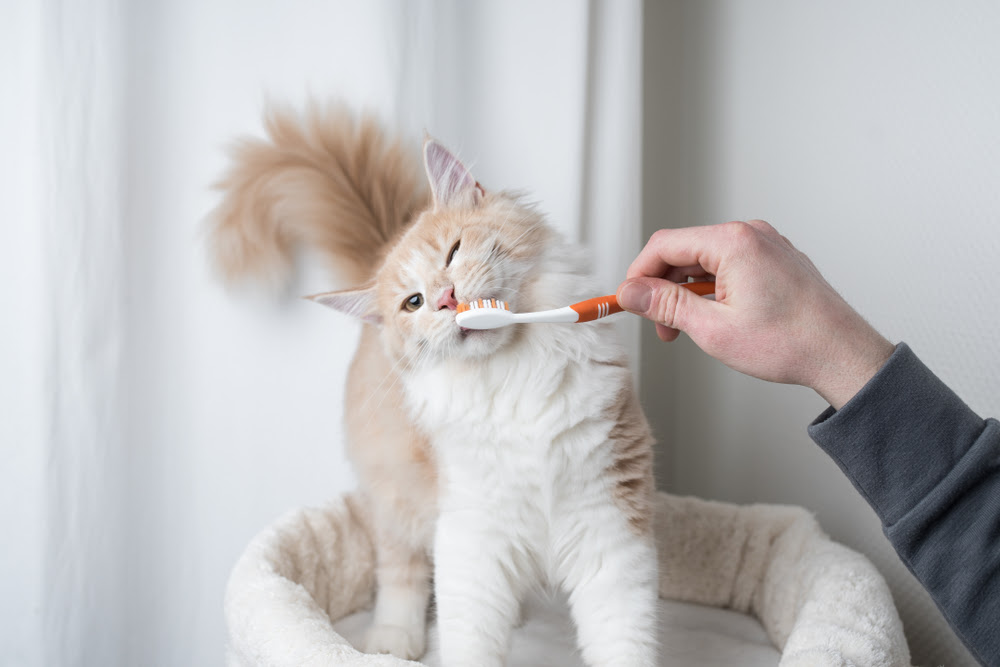Discover one of the reasons behind your pet's increased scratching, and learn more about atopic dermatitis in both dogs and cats.
Discover the benefits of veterinary scoping at Clyde Vet Hospital. Our advanced, minimally invasive techniques help diagnose and treat pets with greater accuracy, less pain, and faster recovery.
Learn the signs, diagnosis, and treatment options for Cushing’s disease in cats. Discover how to spot early symptoms and when to consult your vet for personalised care.
Learn the signs, causes, and treatment options for Cushing’s disease in dogs. Understand how early diagnosis can improve your pet’s quality of life.
As pet owners, we all want our furry friends to be healthy and happy, but sometimes pets can face health issues similar to humans. One such issue is diabetes. While it may sound like something that only affects people, dogs and cats can also develop diabetes. If you’re wondering whether your pet can get diabetes, how to recognise the signs, and how to manage it, you’re in the right place.
Can My Dog Or Cat Get Diabetes? Are They Like Humans, Needing Insulin?
Yes, both dogs and cats can develop diabetes, and it can affect them similarly to how it affects humans. There are two main types of diabetes in pets:
- Diabetes Insipidus: This is a rare form of diabetes, often linked to hormonal imbalances. It’s different from the more common type but still something to be aware of.
- Diabetes Mellitus: This is the most common type of diabetes in pets, and it’s similar to type 2 diabetes in humans. Diabetes mellitus occurs when the body is unable to regulate insulin properly, either due to insufficient insulin production or the body’s inability to use it effectively. This causes a spike in blood glucose levels. Pets with this form of diabetes will often require insulin injections to help regulate their blood glucose levels.
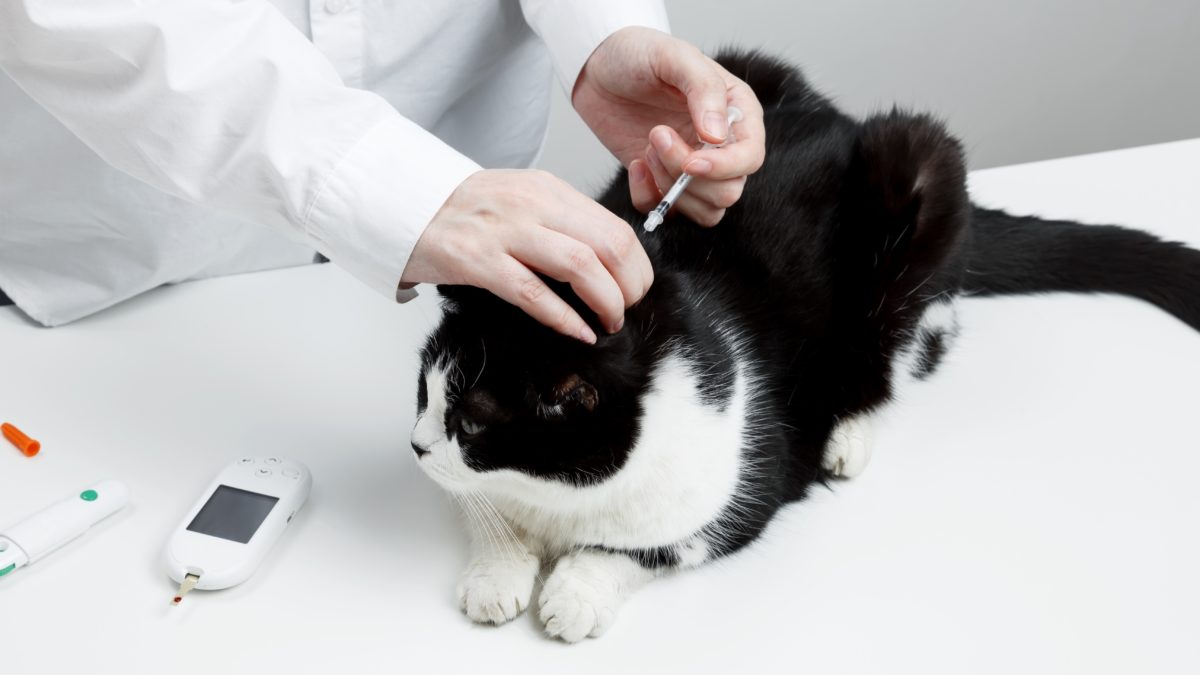
What Do I Need To Look For If My Pet Is Diabetic?
Recognising the signs of diabetes early can help your pet avoid complications and lead to a more successful treatment. Some common symptoms to watch out for include:
- Increased Thirst and Urination: If you find yourself filling your pet’s water bowl more often or noticing an increase in accidents around the house, this could be a sign of diabetes. When blood sugar levels are high, pets will drink more to compensate for dehydration, and they may urinate more frequently.
- Weight Loss: Despite an increase in appetite, your pet may lose weight rapidly. This is because their body is not able to properly utilise glucose for energy, and it begins breaking down muscle and fat stores instead.
- Bad Breath: A distinct, sweet or fruity odor on your pet’s breath is often a sign of diabetes. This can occur when the body starts burning fat for energy due to a lack of glucose.
- Lethargy or Weakness: You may notice that your pet seems more tired or sluggish than usual. The lack of energy from glucose can cause them to be less active.
Why Do I Have To Treat Diabetes As Soon As Possible?
It’s crucial to treat diabetes in pets as soon as possible to avoid serious health complications. If left untreated, elevated blood glucose levels can cause a range of health problems, including damage to vital organs like the kidneys, liver, and eyes. Additionally, untreated diabetes can lead to a severe and life-threatening condition called ketoacidosis, where the blood becomes too acidic, leading to vomiting, lethargy, and potentially coma. Early intervention helps to stabilise blood sugar levels, preventing further complications and ensuring your pet’s long-term health.
What Do I Need To Look After My Diabetic Pet?
Managing a diabetic pet requires dedication, but with proper care, many pets can live happy and healthy lives. Here’s what you’ll need to do to care for your diabetic pet:
- Regular Insulin Injections: If your pet is diagnosed with diabetes mellitus, they will likely need insulin injections. This helps regulate their blood glucose levels. Your veterinarian will teach you how to administer the injections, and it’s essential to stick to the recommended schedule.
- Proper Diet: Feeding your diabetic pet the right food is key to managing their condition. A high-fibre diet that helps regulate blood sugar is often recommended. Work with your vet to determine the best diet plan for your pet’s specific needs.
- Monitor Blood Glucose Levels: Just like humans with diabetes, your pet’s blood glucose will need to be monitored regularly. Your vet will guide you on how to check their glucose levels at home and may suggest blood tests during vet visits.
- Exercise and Weight Management: Regular exercise is essential for diabetic pets, as it helps regulate blood sugar levels and maintain a healthy weight. However, any exercise plan should be tailored to your pet’s individual needs and abilities. Excess weight can worsen diabetes, so maintaining a healthy weight is crucial.
- Frequent Vet Checkups: Regular checkups with your veterinarian are essential for monitoring your pet’s condition. They will adjust insulin doses as needed, and keep track of any potential complications, ensuring the best care possible.
How To Prevent Diabetes In Pets
Preventing diabetes in your pets involves addressing the factors that contribute to the development of the disease. Although you can’t control genetics, there are steps you can take to minimise the risk:
- Maintain a Healthy Weight: Obesity is one of the most significant risk factors for diabetes in pets. Overweight pets are more likely to develop diabetes, as extra body fat can lead to insulin resistance. Keep your pet’s weight in check by feeding a balanced diet and engaging in regular physical activity.
- Encourage Regular Exercise: Physical activity helps keep your pet’s weight under control and promotes proper insulin use in the body. Daily walks for dogs and active playtime for cats are great ways to keep them moving and healthy.
- Provide a Balanced Diet: Feed your pet a nutritious diet tailored to their needs. High-quality pet foods that are low in carbohydrates and high in fibre can help maintain blood sugar levels. Limit treats, and avoid feeding them human food, which is often high in sugar or fat.
- Regular Vet Checkups: Regular veterinary visits are essential to monitor your pet’s health and detect any early signs of diabetes or other issues. This includes checking for early symptoms such as weight loss or excessive thirst, which can be indicators of diabetes.
- Limit Stress: Chronic stress can affect your pet’s overall health, including the development of diabetes. Ensure your pet has a stable environment with a predictable routine and plenty of opportunities for relaxation and play.
- Monitor for Early Signs: Keep an eye on your pet’s behaviour and health. If you notice any changes in appetite, thirst, or urination, or if they begin losing weight without reason, it’s essential to consult a vet right away. Early detection and treatment can prevent diabetes from becoming a more serious problem.
Conclusion
Just like humans, cats and dogs can develop diabetes, and managing the disease is vital to their health and well-being. Recognising the signs early, starting treatment promptly, and following the Clyde Veterinary Team’s recommendations can make a big difference. With proper care, your diabetic pet can lead a full, happy life. If you notice any signs of diabetes in your pet, don’t hesitate to contact Clyde Veterinary Hospital for a proper diagnosis and treatment plan.
Book an Appointment Today
Whether you’re looking for advice, reassurance, or a little extra guidance, the Clyde Veterinary Team is here to support you and your furry family members every step of the way. Reach out to us for expert care tailored to keep your pets happy, healthy, and thriving.
About the Author:
Dr. Irene Mitry is the owner and founder of Clyde Veterinary Hospital, and a vet with a difference. She has not one, but two veterinary degrees, and an abiding passion for preventative pet care. Her life-long love for our animal friends shines through in everything she does, as her client testimonials show. Dr Mitry’s long-standing desire to bring this philosophy of care to life in her own purpose-built veterinary clinic led her to found Clyde Veterinary Hospital in 2018.
Annual blood tests are a vital part of your pet’s healthcare routine, providing a baseline for comparison, enabling early detection of health issues, and uncovering hidden conditions before they become serious. From spotting early signs of disease to ensuring safe anaesthesia during procedures, regular bloodwork helps your pet live a longer, healthier life. Learn why prevention through routine testing is key to your pet’s well-being.
Discover how to choose the best food for your pet with this comprehensive guide. Learn about age-specific diets, dry vs. wet food, and how to monitor your pet's health through nutrition. Ensure your furry friend stays happy and healthy!
How to Keep Your Pet Safe in Hot Weather
As the summer sun shines bright, many dog owners are eager to enjoy outdoor activities with their furry companions. Whether it’s a walk in the park, a beach day, or a game of fetch in the backyard, the warm weather can be a lot of fun for both humans and their pets. But while we can simply put on sunscreen or step into the shade, your dog can’t take off their fur coat to cool down.
Heat stroke in dogs is a serious concern that can be life-threatening if not handled quickly and properly. Understanding the signs of heat stroke, how dogs regulate their body temperature, and knowing what to do in an emergency can help protect your pet from harm and ensure they stay safe during hot weather.
How Do Dogs Cool Down?
Dogs have a few methods of dissipating heat, but they’re not as efficient at cooling off as humans are. Unlike us, dogs don’t sweat to regulate their body temperature. Instead, they rely on:
- Evaporation
Dogs cool down by panting. As they breathe in, the moisture in their noses and mouths evaporates, carrying heat away from their bodies. The faster the panting, the more heat they can release. - Conduction
Your dog will also try to cool down by lying on a cool surface. This helps them absorb heat from their bodies into the cooler floor beneath them. - Convection
When a dog sticks their head out of the car window, they’re using the breeze or moving air to help cool their skin. This helps them regulate their body temperature when air is moving around them.
Signs of Heat Stroke in Dogs
It’s essential to recognise the early signs of heat stroke in dogs so you can act quickly. Heat stroke occurs when your dog’s body becomes unable to cool itself efficiently, and it can be life-threatening. Some common signs to watch out for include:
- Excessive Panting and Drooling
Heavy panting is one of the first signs that your dog is overheating. You may also notice excessive drooling or foaming around their mouth. - Increased Thirst
If your dog is drinking more water than usual or excessively licking their lips, they may be trying to rehydrate due to heat exhaustion. - Lethargy or Disorientation
If your dog seems unusually tired, sluggish, or disoriented, it could be a sign they are suffering from heat stroke. - Vomiting or Diarrhea
Heat stroke can cause gastrointestinal distress, including vomiting or diarrhea. - Heavy, Sustained Breathing
If your dog is struggling to breathe, especially with an open mouth or labored effort, this is a serious warning sign. - Collapse
In the most severe cases, heat stroke can cause your dog to collapse, which requires immediate veterinary attention.
What to Do If Your Dog Has Heat Stroke
If you suspect your dog is experiencing heat stroke, you must act fast. The earlier you intervene, the better the outcome for your dog.
- Hydrate Them
Ensure your dog always has access to fresh water. You can offer them small sips of cool water, but never force them to drink large amounts at once.
- Get Them Indoors
Move your dog to a cool, shaded area, ideally with air conditioning or a fan. Don’t rely on shade alone—your dog needs to be in a cooler environment to recover.
- Cool Them Down
Place your dog on a cool surface like a tile floor or wooden floorboards. If you’re outdoors, wet towels with cool (not cold) water and gently apply them to your dog’s body. Avoid using ice or ice-cold water, as it can cause shock. A gentle stream of cool water from a hose or a fan blowing on your dog can also help.
- Avoid Exercise
Do not attempt to walk your dog or make them exercise in the heat. If your dog seems overheated, it’s best to avoid outdoor activities altogether until temperatures cool down.
- Consider Shaving Your Dog’s Coat or Full Groom
- If your dog has a thick, dense coat (such as a Siberian Husky), it’s important to groom them before the hot weather starts to help remove the winter undercoat. This can improve their ability to regulate body heat and stay cooler.
- For dogs with curly or heavy coats, such as Poodles, trimming their fur during the warmer months can also help them stay more comfortable. However, it’s crucial to consult with a professional groomer or veterinarian to ensure that shaving or trimming is safe for your dog’s
- Seek Veterinary Help Immediately
If your dog’s symptoms don’t improve or worsen, get them to a veterinarian immediately. Heat stroke can cause serious internal damage, and time is of the essence in these cases. Make sure to transport your dog to a vet while providing them with wet towels and air conditioning to prevent further heat stress.
Breeds at Higher Risk for Heat Stroke
While all dogs can experience heat stroke, some breeds are more prone to overheating due to their physical characteristics. Short-nosed breeds, such as Bulldogs, Pugs, and Boxers, have a harder time panting effectively, making them more susceptible to heat stroke. Older dogs, overweight dogs, and those with underlying health conditions are also at a higher risk.
Preventing Heat Stroke in Dogs
The best way to prevent heat stroke is to take precautions before it happens. Here are some tips for keeping your dog safe during the summer months:
- Provide Fresh Water
Always have fresh water available, especially on hot days, and make sure your dog stays hydrated. - Avoid Hot Walks
Try to walk your dog early in the morning or late in the evening when it’s cooler. Avoid walking during the heat of the day, especially on hot pavement, which can burn their paws. - Keep Your Dog Indoors
If the weather is extremely hot, keep your dog inside with access to cool, shaded spaces. Limit outdoor activity during peak heat hours. - Monitor for Symptoms
Pay attention to any signs of heat distress, and be ready to act quickly if needed.
Conclusion
- While summer is a time for fun and outdoor adventures with your dog, it’s important to stay vigilant about the risks of heat stroke. By understanding how dogs dissipate heat and recognising the signs of overheating, you can ensure your dog stays safe, comfortable, and hydrated throughout the warmer months.
- With a little extra care, your dog can enjoy the summer sun without putting their health at risk. If you notice any of the symptoms of heat stroke, act quickly and seek veterinary help if necessary. Together, you and your dog can enjoy many more sunny days!
Need More Help Keeping Your Dog Safe in the Heat?
At Clyde Veterinary Hospital, we’re here to help ensure your dog stays healthy and happy all year round, no matter the weather. If you have any questions about heat stroke prevention or need advice on your pet’s well-being, don’t hesitate to reach out. Our team of experts is available to guide you in keeping your furry friend comfortable during hot weather.
Book an Appointment Today
Whether you’re looking for advice, reassurance, or a little extra guidance, the Clyde Veterinary Team is here to support you and your furry family members every step of the way. Reach out to us for expert care tailored to keep your pets happy, healthy, and thriving.
About the Author:
Dr. Irene Mitry is the owner and founder of Clyde Veterinary Hospital, and a vet with a difference. She has not one, but two veterinary degrees, and an abiding passion for preventative pet care. Her life-long love for our animal friends shines through in everything she does, as her client testimonials show. Dr Mitry’s long-standing desire to bring this philosophy of care to life in her own purpose-built veterinary clinic led her to found Clyde Veterinary Hospital in 2018.
Learn about the health challenges faced by brachycephalic dog breeds like Bulldogs and Pugs. Explore surgical options and home care strategies to improve their quality of life and manage issues.
Pet Vaccinations: Protecting Your Pet from Serious Diseases
As pet owners, we all want to ensure our furry companions live long, happy, and healthy lives. One of the most effective ways to protect them is by keeping up with their vaccinations. Vaccines are crucial in preventing some of the most dangerous and fatal diseases that can affect our pets. In this blog, we’ll explore the benefits of vaccinating your dog against diseases like Parvo, Distemper, Hepatitis, Kennel Cough, and Leptospirosis—common and potentially fatal illnesses that can be prevented with the right vaccine and like Feline Panleukopenia , Feline Calicivirus and Feline Herpesvirus. Understanding the risks and benefits of vaccination can help you make informed decisions for the health of your pets.
Why Vaccinate Your Dog?
By vaccinating your dog, you help strengthen their immune system and prepare it to fight off infections. Just as humans rely on vaccines to protect themselves against the flu or measles, pets depend on vaccinations to avoid dangerous diseases.
- The Dangers of Parvovirus (Parvo)
Parvovirus is one of the most serious and highly contagious diseases that affect dogs, particularly puppies. Parvo attacks the gastrointestinal system and can cause severe vomiting, diarrhea (often bloody), dehydration, and fever. If left untreated, Parvo can lead to death within a matter of days. The virus spreads through contact with infected feces or contaminated surfaces. In Australia, Parvo remains a significant threat, especially in areas with high dog populations, and vaccination is essential to avoid a potentially fatal outcome.
The Parvo vaccine is part of the core vaccine series given to puppies and should be kept up-to-date throughout adulthood. Without vaccination, the virus can spread rapidly, and the consequences can be devastating.
- Distemper: A Serious, Often Fatal Virus
Distemper is another highly contagious and potentially fatal virus affecting dogs, especially unvaccinated puppies. This virus can cause a range of symptoms, from respiratory issues (coughing and nasal discharge) to neurological symptoms (seizures, tremors, and paralysis). Distemper often has a high mortality rate, and even if a dog survives, it can suffer long-term neurological damage.
Fortunately, the distemper vaccine is included in the core vaccine protocol for puppies and dogs, offering significant protection against this deadly virus. In Australia, where outbreaks can occur, keeping your dog vaccinated is the best defense against this severe disease.
- Canine Hepatitis: Protecting Your Dog’s Liver
Canine Hepatitis (caused by the canine adenovirus) is a viral infection that primarily affects the liver, kidneys, and eyes. It can lead to symptoms like fever, abdominal pain, vomiting, diarrhea, and in severe cases, organ failure. Canine Hepatitis can be fatal, particularly in young or immunocompromised dogs.
The vaccination for canine hepatitis is included in the core vaccine series and is effective in preventing the virus. Dogs that aren’t vaccinated are at risk of contracting this serious illness, so maintaining an up-to-date vaccination schedule is critical.
- Kennel Cough: The “Dog Flu”
Kennel Cough, also known as canine infectious respiratory disease (CIRD), is a contagious respiratory illness that is similar to the flu in humans. It’s caused by a combination of viruses and bacteria, including Bordetella bronchiseptica and the canine parainfluenza virus. Symptoms typically include a persistent cough, nasal discharge, and a slight fever.
While kennel cough is generally not life-threatening in healthy dogs, it can be highly contagious, spreading quickly in places like kennels, dog parks, and grooming facilities. That’s why the kennel cough vaccine is often required for dogs attending daycare or boarding facilities.
The kennel cough vaccine is typically administered annually—just like the flu shot in humans. It helps to prevent the spread of this respiratory illness and ensures that your dog remains protected from the discomfort and potential complications that can arise from an infection.
- Leptospirosis: A Dangerous Zoonotic Disease
Leptospirosis is a bacterial infection that can affect both humans and animals. In dogs, it can lead to kidney damage, liver failure, and, in some cases, death. The disease is caused by the bacteria Leptospira, which can be found in the urine of infected wildlife, particularly rats. Dogs can become infected by coming into contact with contaminated water, soil, or even by drinking from puddles or ponds that have been contaminated.
In Australia, leptospirosis is a growing concern, especially in areas with high rainfall and dense wildlife populations. The leptospirosis vaccine is not part of the core vaccine series, but it is recommended for dogs that are at a higher risk, such as those who live in rural or flood-prone areas, or those that frequently swim or drink from outdoor water sources.
Dog Vaccines Schedule
The vaccination schedule begins when puppies are around 6 to 8 weeks old, with a series of initial vaccinations followed by booster shots to ensure proper immunity. After the initial series, Some vaccines, like Kennel Cough and Leptospirosis, require annual boosters as an adult dogs, For other core vaccines, such as those for Parvovirus, Distemper, and Hepatitis, booster shots are typically needed either annually or every three years, the other viruses (depending on the specific vaccine used and your veterinarian’s recommendation) to maintain protection against these dangerous diseases.
Cat Vaccinations: Essential for Feline Health
Just like dogs, cats also require vaccines to protect them from serious diseases. The core vaccines for cats are vital in preventing potentially fatal diseases that can spread easily among felines.
F3 Vaccine: The Basic Feline Protection
The F3 vaccine is a core vaccine for cats , covering protection against three serious diseases:
- Feline Calicivirus (FCV): This virus causes respiratory issues in cats, including sneezing, nasal discharge, and mouth ulcers. Severe cases can lead to pneumonia and can be fatal, especially in kittens or immunocompromised cats.
- Feline Herpesvirus (FHV-1): This is another common cause of upper respiratory infections in cats. Symptoms include sneezing, coughing, and conjunctivitis (eye inflammation). FHV-1 can cause chronic respiratory issues, and kittens are particularly vulnerable to severe forms of the disease.
- Feline Panleukopenia (FPV): Also known as feline distemper, FPV is a highly contagious and often fatal disease that affects a cat’s immune system, leading to fever, vomiting, diarrhea, and dehydration.
Vaccinating your cat with the F3 vaccine is essential to protect them from these severe illnesses.
F3 Vaccine Schedule for Cats
The F3 vaccination schedule typically begins when kittens are around 6- 8 weeks old, with a series of initial vaccinations followed by booster shots to maintain immunity. After the initial series, adult cats will need a booster shot either annually or every three years (depending on the specific vaccine used and your veterinarian’s advice) to keep their protection against these diseases strong.
What Happens if You Skip Vaccines?
Failing to vaccinate your dog—or cat—puts them at serious risk of contracting severe, often fatal diseases. In dogs, diseases like Parvo, Distemper, and Hepatitis can be deadly, and the treatment for these conditions can be extremely expensive, often requiring long hospital stays and intensive care. Vaccination is a much more cost-effective solution, providing critical protection against these potentially catastrophic diseases.
For cats, skipping vaccines like the F3 vaccine—which protects against Feline Calicivirus, Herpesvirus, and Panleukopenia—puts them at risk of suffering from severe respiratory illnesses or fatal conditions like feline Panleukopenia. Just as with dogs, the costs of treating these diseases can be significant, and the impact on your cat’s health can be long-lasting.
In addition, for dogs skipping the Kennel Cough vaccine (for dogs) or failing to keep up with annual boosters can expose them to respiratory infections that are easily spread in places where pets interact, like parks, grooming salons, and boarding facilities. The good news is that all of these diseases are preventable through vaccination, offering your pet a much safer and healthier life.
Conclusion: Protect Your Pets with Vaccination
Vaccinations are one of the simplest, most effective ways to protect your pets from serious, sometimes fatal diseases. By keeping up with the recommended vaccination schedules for Parvo, Distemper, Hepatitis, Kennel Cough, and Leptospirosis (for dogs), and the F3 vaccination (for cats), you help ensure your pets lead long, healthy lives.
where many of these diseases are still prevalent, and where environmental factors increase the risk of certain infections,
vaccination is not just recommended—it’s essential. Regular veterinary check-ups, combined with a solid vaccination plan, will give your pet the best chance of living a healthy, happy life.
So, talk to your veterinarian today about setting up a vaccination plan that works for your pet. It’s a small step that makes a world of difference in keeping your beloved companion protected from serious illnesses.
Book an Appointment Today
Whether you’re looking for advice, reassurance, or a little extra guidance, the Clyde Veterinary Team is here to support you and your furry family members every step of the way. Reach out to us for expert care tailored to keep your pets happy, healthy, and thriving.
About the Author:
Dr. Irene Mitry is the owner and founder of Clyde Veterinary Hospital, and a vet with a difference. She has not one, but two veterinary degrees, and an abiding passion for preventative pet care. Her life-long love for our animal friends shines through in everything she does, as her client testimonials show. Dr Mitry’s long-standing desire to bring this philosophy of care to life in her own purpose-built veterinary clinic led her to found Clyde Veterinary Hospital in 2018.
Discover why vet bills in Australia can feel high and explore the factors behind these expenses—from operational costs to specialised equipment and medications. Learn how pet insurance can help ease financial strain and ensure the best care for your furry family members.
Heart disease is a serious health concern for both dogs and cats, impacting their quality of life and longevity. Early detection, proper treatment, and effective management are essential for ensuring your furry companions can lead happy and healthy lives. In this blog, we’ll explore what heart disease is, the breeds that are most prone to it, and how to diagnose, treat, and manage these conditions in both dogs and cats.
What is Heart Disease?
Heart disease in pets refers to a variety of conditions that affect the heart’s structure and function. These conditions can be congenital (present at birth) or acquired over time. Common types of heart disease in dogs and cats include:
- Dilated Cardiomyopathy (DCM): A condition that causes the heart to enlarge and weaken, impairing its ability to pump blood effectively.
- Hypertrophic Cardiomyopathy (HCM): Particularly common in cats, this condition involves the thickening of the heart muscle, which can lead to heart failure.
- Mitral Valve Disease (MVD): Common in older dogs, this degenerative condition affects the mitral valve, leading to blood flow issues.
- Heartworm Disease: Caused by parasitic worms transmitted through mosquito bites, this disease can cause severe damage to the heart and lungs in both dogs and cats.
Prone Breeds
Certain breeds are genetically predisposed to heart disease.
Dogs:
- Cavalier King Charles Spaniel: Particularly susceptible to mitral valve disease.
- Doberman Pinscher: Prone to dilated cardiomyopathy.
- Boxer: Often affected by arrhythmogenic right ventricular cardiomyopathy.
- German Shepherd: Can develop dilated cardiomyopathy and other heart issues.
Cats:
- Maine Coon: Prone to hypertrophic cardiomyopathy.
- Ragdoll: Another breed at higher risk for HCM.
- British Shorthair: May also be affected by heart issues, particularly HCM.
- Sphynx: This breed has a higher incidence of HCM.
While these breeds are at higher risk, any dog or cat can develop heart disease, making regular veterinary check-ups essential.
Clinical Signs of Heart Disease in Dogs and Cats
Recognising the signs of heart disease early can be crucial for effective treatment and management. Both dogs and cats exhibit various symptoms that may indicate a heart condition. Here’s what to look for:
Common Clinical Signs in Dogs:
- Coughing: Persistent coughing, especially during exercise or at night, can indicate fluid buildup in the lungs.
- Difficulty Breathing: Labored breathing or increased respiratory rate, especially when at rest.
- Fatigue and Weakness: Reduced stamina or lethargy; your dog may tire more quickly during walks or play.
- Fainting or Collapse: Episodes of fainting (syncope) can occur due to inadequate blood flow.
- Abdominal Swelling: Bloating or a distended abdomen may indicate fluid accumulation.
- Poor Appetite or Weight Loss: A decrease in appetite or unintentional weight loss can signal health issues.
- Cold Extremities: Cold or blue-tinged gums and paws may indicate poor circulation.
- Increased Thirst or Urination: Changes in drinking and urination habits can be related to heart disease.
Common Clinical Signs in Cats:
- Labored Breathing: Rapid or difficult breathing, often accompanied by open-mouth breathing.
- Coughing: While less common than in dogs, some cats may cough if heart disease affects lung function.
- Lethargy: Increased fatigue or a lack of interest in play or normal activities.
- Weight Loss: Unexplained weight loss can be a sign of chronic health issues, including heart disease.
- Poor Grooming: Cats may groom less, leading to an unkempt appearance.
- Abdominal Distension: Swelling in the abdomen due to fluid buildup.
- Fainting or Weakness: Similar to dogs, fainting or weakness can occur in cats with heart conditions.
- Sudden Changes in Behaviour: Increased hiding, aggression, or other behavioural changes can be indicative of discomfort or distress.
Diagnosis of Heart Disease
Diagnosing heart disease in pets typically involves a combination of the following methods:
- Veterinary Examination: A thorough physical exam where the veterinarian checks for heart murmurs, irregular heartbeats, and other signs of heart disease.
- Blood Tests: These can help identify underlying health issues that may contribute to heart problems.
- X-rays: Chest X-rays can reveal the size of the heart and any fluid in the lungs, indicating heart failure.
- Ultrasound: An echocardiogram provides a detailed look at the heart’s structure and function, allowing for a more accurate diagnosis.
- Electrocardiogram (ECG): This test records the electrical activity of the heart, helping to detect arrhythmias.
Treatment Options
Once diagnosed, heart disease can be managed with various treatment options tailored to the pet’s specific condition and needs:
-
Medications
- Diuretics: Help reduce fluid buildup in the lungs and other tissues.
- ACE Inhibitors: Lower blood pressure and decrease the workload on the heart.
- Beta-Blockers: Can help control heart rate and rhythm.
- Pimobendan: A medication that improves heart contractility and helps with heart failure.
Always consult your veterinarian before starting any medication, as dosages and types can vary based on individual health conditions.
-
Environmental Management
In addition to medications, lifestyle changes can significantly improve the quality of life for pets with heart disease:
- Diet: A heart-healthy diet low in sodium and rich in essential nutrients can support heart function. Some pets may benefit from prescription diets designed for heart health.
- Exercise: While exercise is essential, it should be tailored to the pet’s condition. Short, moderate walks for dogs and play sessions for cats can help maintain fitness without overexertion.
- Weight Management: Keeping your pet at a healthy weight reduces strain on the heart. Regular monitoring and adjustments to diet and exercise are crucial.
- Stress Reduction: Minimise stressors in your pet’s environment. Create a calm and safe space for them to relax.
- Regular Check-ups: Frequent vet visits will allow for monitoring of the condition and timely adjustments to treatment as necessary.
Conclusion
Heart disease in dogs and cats can be challenging, but with early detection and appropriate management, many pets can continue to lead fulfilling lives. Regular veterinary check-ups, awareness of breed predispositions, and attention to lifestyle factors are crucial components of effective heart disease management.
If you suspect your pet may be showing signs of heart issues—such as coughing, difficulty breathing, lethargy, or decreased appetite—don’t hesitate to contact us.
Your proactive approach can significantly impact your pet’s health and happiness, ensuring they remain your loyal companion for years to come.
Book an Appointment Today
Whether you’re looking for advice, reassurance, or a little extra guidance, the Clyde Veterinary Team is here to support you and your furry family members every step of the way. Reach out to us for expert care tailored to keep your pets happy, healthy, and thriving.
About the Author:
Dr. Irene Mitry is the owner and founder of Clyde Veterinary Hospital, and a vet with a difference. She has not one, but two veterinary degrees, and an abiding passion for preventative pet care. Her life-long love for our animal friends shines through in everything she does, as her client testimonials show. Dr Mitry’s long-standing desire to bring this philosophy of care to life in her own purpose-built veterinary clinic led her to found Clyde Veterinary Hospital in 2018.
Fleas and Ticks in Cats and Dogs: A Guide for Pet Owners
Fleas and ticks are more than just a nuisance for pets; they can cause significant health problems for our beloved cats and dogs. The warm climate creates an ideal environment for these pests to thrive, making it crucial for pet owners to understand the risks associated with fleas and ticks, the diseases they can transmit, and effective treatment options.
Let’s dive into the impact of fleas and ticks on pets including types of ticks and the specific issues they can cause.
The Risks of Fleas:
Fleas: Common Problems and Diseases
Fleas are tiny, blood-sucking insects that can quickly infest your pet and home. They can cause a range of health issues, including:
- Flea Allergy Dermatitis (FAD): This allergic reaction to flea saliva leads to severe itching, redness, and inflammation. Pets with FAD may scratch incessantly, leading to skin infections and hair loss.
- Tapeworms: Fleas can carry tapeworm larvae. If a pet ingests a flea while grooming, they may become infected with tapeworms, resulting in weight loss and gastrointestinal issues.
- Anaemia: In severe cases, especially in young or small pets, a heavy flea infestation can lead to anaemia due to blood loss.
The Risks of Ticks:
Ticks: Types and Their Impact :
Ticks are arachnids that attach to the skin of animals to feed on blood. Several tick species pose significant threats to pets:
- Brown Tick (Rhipicephalus sanguineus):
The Brown Tick, scientifically known as Rhipicephalus sanguineus, is a common parasite that primarily infests dogs. It poses several health risks, primarily due to the diseases it can transmit. One of the most concerning infections associated with this tick is caused by the bacterium Ehrlichia canis.
Health Risks
Symptoms may include:
- Lethargy: Dogs may appear unusually tired or inactive.
- Weight Loss: Unexplained weight loss can occur over time.
- Poor Appetite: Decreased interest in food may be noted.
- Fever: Persistent or recurrent fever can be a sign.
- Swollen Lymph Nodes: Enlargement of lymph nodes may be visible.
- Joint Pain: Dogs may show signs of discomfort or limping.
- Respiratory Issues: Coughing or difficulty breathing can occur.
- Skin Problems: Various skin issues, including bleeding or bruising.
- Anaemia: Signs of anaemia may include pale gums, weakness, or increased heart rate.
2. Bush Tick(Haemaphysalis longicornis)
Bush Tick is a common ectoparasite that can infest dogs and cats. While many ticks are harmless or primarily cause skin irritation, the Bush Tick can pose serious health risks to dogs, including the potential for fatal diseases.
One of the most concerning infections transmitted by the Bush Tick is babesiosis, a parasitic infection that affects red blood cells.
Babesiosis: Caused by the protozoan parasites Babesia canis and Babesia gibsoni, this condition can lead to:
- Anaemia: A significant drop in red blood cells, resulting in weakness, lethargy, and pale gums.
- Lack of Oxygen: With fewer red blood cells, there is a decreased ability to transport oxygen throughout the body, which can lead to serious complications.
- Fever and Jaundice: Infected dogs may show elevated temperatures and yellowing of the skin and eyes.
3. The Paralysis Tick(Ixodes holocyclus) is one of the most dangerous tick species in Australia, known for its potential to cause severe health issues in both dogs and cats. This tick poses significant risks due to its ability to transmit toxins that can lead to paralysis. if left untreated, can be fatal.
Skin Irritation and Other Health Problems
Both fleas and ticks can lead to significant skin irritation in pets. Common issues include:
- Itchy Skin: Continuous scratching can lead to secondary infections, hot spots, and severe dermatitis.
- Hair Loss: Excessive scratching or biting may result in bald patches, especially around the tail and neck.
- Hot Spots: These painful, inflamed areas develop from constant licking or scratching and can become infected if not treated promptly.
Prevention Plan:
For Cats
- Regular Grooming: Frequent brushing helps you spot fleas and ticks early.
- Flea Collars: Ensure they are specifically designed for cats and are safe for their use.
- Topical Treatments: Vet-recommended topical treatments provide long-lasting protection against fleas and ticks.
- Environmental Control: Vacuuming regularly and washing pet bedding helps eliminate flea eggs and larvae.
For Dogs
- Oral Medications: Prescription pills are highly effective for preventing both fleas and ticks.
- Topical Solutions: These are designed to kill and repel fleas and ticks effectively.
- Environmental Control: Vacuuming regularly and washing pet bedding helps eliminate flea eggs and larvae.
- Regular Check-ups: Routine vet visits help keep your dog’s flea and tick prevention updated.
Treatment Options
If your pet is already dealing with fleas or ticks, there are effective treatment methods available:
Fleas
- Oral medication : to relief the discomfort and the irritation on the skin
- Oral or spot on medication : that can kill fleas within hours.
- Flea Shampoos: These helps remove fleas and soothe irritated skin.
Ticks
- Manual Removal: Use fine-tipped tweezers to grasp the tick as close to the skin as possible and pull straight out to avoid leaving parts behind.
- Topical and Oral Treatments: Many of the same treatments for fleas also work for ticks.
The Role of Cats in Flea Infestations
Cats are significant carriers of fleas and can easily bring them into the home. They often groom themselves and may ingest fleas, exacerbating the problem. It’s crucial to treat both cats and dogs to prevent cross-infestation and keep your living space flea-free.
Conclusion
Fleas and ticks are serious threats to the health of our pets. Understanding the diseases they can transmit, the skin problems they can cause, and how to effectively treat and prevent infestations is essential for every pet owner.
Regular veterinary care, consistent preventive measures, and a clean home environment can help keep your pets happy and healthy, free from these troublesome pests. By being proactive and informed, you can ensure a safe and comfortable living space for your furry friends.
Book an Appointment Today
About the Author:
Dr. Irene Mitry is the owner and founder of Clyde Veterinary Hospital, and a vet with a difference. She has not one, but two veterinary degrees, and an abiding passion for preventative pet care. Her life-long love for our animal friends shines through in everything she does, as her client testimonials show. Dr Mitry’s long-standing desire to bring this philosophy of care to life in her own purpose-built veterinary clinic led her to found Clyde Veterinary Hospital in 2018.
As our beloved furry friends age, they may face unique challenges and health issues. Senior dogs and cats deserve special attention and care to ensure they live comfortable and fulfilling lives in their golden years. In this blog post, we’ll explore the common issues faced by senior pets, including diseases and health concerns, and provide practical advice for caring for them.
Understanding Senior Pets: Pets are considered seniors typically around the age of 7 for dogs and 10 for cats, although this can vary based on breed and size. As they age, they may experience changes in behaviour, mobility, and overall health. It’s essential for pet owners to be aware of these changes and provide appropriate care and attention.
Common Health Issues:
- Arthritis: Both dogs and cats can develop arthritis as they age, leading to joint pain and decreased mobility. Providing comfortable bedding and regular, gentle exercise can help alleviate symptoms.
- Dental Disease: Senior pets are prone to dental issues such as gum disease and tooth decay. Regular dental check-ups and teeth cleanings are crucial for maintaining oral health.
- Kidney Disease: Chronic kidney disease is prevalent in senior cats and dogs and can lead to dehydration, weight loss, and lethargy. Specialized diets and regular vet visits are essential for managing this condition.
- Cognitive Dysfunction: Just like humans, pets can suffer from cognitive decline as they age, leading to confusion, disorientation, and changes in behavior. Environmental enrichment and mental stimulation can help slow down cognitive decline.
- Cancer: Senior pets are more susceptible to various types of cancer. Early detection through regular veterinary exams is vital for prompt treatment and management.
Advice for Senior Pet Care:
- Regular Veterinary Check-up and blood tests: Schedule regular check-ups with your veterinarian to monitor your senior pet’s health and address any concerns promptly.
- Balanced Diet: Feed your senior pet a balanced diet tailored to their specific needs, including supplements if recommended by your vet.
- Exercise: Maintain a regular, low-impact exercise routine to keep your senior pet active and help manage weight.
- Comfortable Environment: Create a comfortable and safe environment for your senior pet, including soft bedding and easy access to food, water, and litter boxes.
- Mental Stimulation: Engage your senior pet with interactive toys and puzzles to keep their minds active and stimulated.
- Quality Time: Spend quality time with your senior pet, providing love, attention, and companionship.
Conclusion: Senior dogs and cats bring immense joy and companionship to our lives, and it’s our responsibility as pet owners to ensure they receive the care and attention they need as they age. By understanding the common health issues faced by senior pets and following practical advice for their care, we can help them enjoy their golden years to the fullest. Remember, with proper care and attention, our senior pets can continue to enrich our lives for many years to come.
Book an Appointment Today
About the Author:
Dr. Irene Mitry is the owner and founder of Clyde Veterinary Hospital, and a vet with a difference. She has not one, but two veterinary degrees, and an abiding passion for preventative pet care. Her life-long love for our animal friends shines through in everything she does, as her client testimonials show. Dr Mitry’s long-standing desire to bring this philosophy of care to life in her own purpose-built veterinary clinic led her to found Clyde Veterinary Hospital in 2018.
In the realm of designer dog breeds, few are as charming and beloved as the Cavoodle. With its adorable appearance and affectionate demeanour, this crossbreed between a Cavalier King Charles Spaniel and a Poodle has captured the hearts of dog lovers worldwide. If you’re considering welcoming a Cavoodle into your home or already have one, this guide will provide invaluable insights into nurturing and caring for your furry friend.
Understanding the Cavoodle
Origin and Characteristics
The Cavoodle, also known as Cavapoo, is a crossbreed renowned for its intelligence, gentle nature, and hypoallergenic coat. Originating in the United States during the 1950s, they quickly gained popularity due to their combination of desirable traits from both parent breeds. They typically exhibit a friendly disposition, making them ideal companions for individuals and families alike.
Essential Care Tips
Feeding
Maintaining a balanced diet is crucial for the health and well-being of your Cavoodle. Opt for high-quality dog food formulated for small breeds, and ensure it meets their nutritional requirements. Consult with your veterinarian to determine the appropriate portion sizes and feeding schedule based on your Cavoodle’s age, size, and activity level. Additionally, provide fresh water at all times to keep them hydrated.
Training
Cavoodles are intelligent and eager to please, making them relatively easy to train. Start with basic obedience commands such as sit, stay, and come, using positive reinforcement techniques like treats and praise. Consistency and patience are key when training your Cavoodle, as they respond best to gentle guidance and encouragement. Consider enrolling them in puppy classes or working with a professional trainer to enhance their socialization skills and behaviour.
Grooming
Due to their Poodle lineage, Cavoodles have a curly or wavy coat that requires regular grooming to prevent matting and tangling. Brush their fur several times a week using a slicker brush or comb to remove loose hair and debris. Additionally, schedule professional grooming sessions every 4-6 weeks to trim their coat, clip their nails, and clean their ears. Don’t forget to brush their teeth regularly and schedule dental check-ups to maintain their oral health.
Exercise
Despite their small size, Cavoodles are moderately active dogs that enjoy daily exercise to keep them mentally and physically stimulated. Take them for brisk walks, engage in interactive play sessions, or let them romp in a fenced yard to burn off excess energy. Incorporate mentally stimulating activities like puzzle toys and obedience training to prevent boredom and encourage their natural intelligence.
Health Considerations
Common Health Issues
While generally healthy, Cavoodles may be prone to certain inherited health conditions from their parent breeds, including:
- Mitral Valve Disease
- Hip Dysplasia
- Progressive Retinal Atrophy
- Luxating Patella
Other common health condition they can Have ;
- Ear infection
- Dental disease
- Skin problems
- Separation anxiety
Regular veterinary check-ups, vaccinations, and preventive care are essential for early detection and management of any health concerns. Maintain a consistent vaccination and deworming schedule, and be vigilant for any changes in behaviour, appetite, or mobility that may indicate underlying health issues.
Conclusion
Caring for a Cavoodle requires dedication, patience, and a deep appreciation for their unique personality and needs. By providing proper nutrition, training, grooming, and healthcare, you can ensure a fulfilling and enriching life for your beloved companion. Remember, the bond between a Cavoodle and its owner is built on love, trust, and mutual respect, making every moment together a cherished experience.
Book an Appointment Today
About the Author:
Dr. Irene Mitry is the owner and founder of Clyde Veterinary Hospital, and a vet with a difference. She has not one, but two veterinary degrees, and an abiding passion for preventative pet care. Her life-long love for our animal friends shines through in everything she does, as her client testimonials show. Dr Mitry’s long-standing desire to bring this philosophy of care to life in her own purpose-built veterinary clinic led her to found Clyde Veterinary Hospital in 2018.
As pet owners, we often find comfort in the familiar touch of our furry friends, but what happens when we notice an unexpected lump or bump beneath their coat? While it’s natural to feel alarmed, it’s essential to understand that not all lumps are created equal. Some may be harmless, while others could signal a more serious underlying condition, including cancer.
Identifying the Culprit: Benign vs. Cancerous
Benign Lumps: Benign lumps, also known as non-cancerous growths, are quite common in both cats and dogs. These growths typically develop slowly and often remain unchanged in size and appearance.
Examples of benign lumps include :
- lipomas (fatty tumors),
- cysts, and skin tags.
While benign lumps are generally harmless, they can sometimes cause discomfort or irritation, especially if they grow large or are located in areas prone to friction.
Cancerous Lumps: On the other hand, cancerous lumps, or malignant tumors, pose a more significant threat to your pet’s health. These growths can spread rapidly to surrounding tissues and organs, making early detection and treatment crucial.
Common types of cancer in pets include:
- mast cell tumors,
- sarcomas
- mammary gland tumors (especially in unspayed female dogs and cats).
- Squamous cell carcinoma in cats
When to Worry: Signs and Symptoms
Benign Lumps: Benign lumps often present as soft, movable masses beneath the skin. They may not cause any noticeable symptoms, but in some cases, they can lead to localized swelling, hair loss over the affected area, or even ulceration if they become irritated. However, benign lumps typically do not adhere to surrounding tissues or cause pain unless they impinge on nerves or blood vessels due to their size or location.
Cancerous Lumps: Cancerous lumps, on the other hand, may exhibit more concerning signs, such as rapid growth, irregular shape, firmness, or fixation to underlying tissues. Additionally, you may notice changes in your pet’s behavior, such as decreased appetite, lethargy, weight loss, or difficulty breathing, depending on the location and type of tumor. It’s essential to consult your veterinarian promptly if you notice any concerning changes.
Distinguishing Benign from Cancerous: The Diagnostic Journey
When it comes to lumps and bumps, determining whether they are benign or cancerous requires professional expertise.
Your veterinarian will conduct a thorough physical examination and further diagnostic tests, such as fine needle aspiration (FNA), biopsy, or imaging studies.
These diagnostic tools help differentiate between harmless growths, like lipomas or cysts, and more serious conditions, such as mast cell tumors or sarcomas.
Conclusion: Vigilance and Veterinary Care
In conclusion, while encountering a lump or bump on your beloved pet can be concerning, it’s essential to approach the situation with vigilance and veterinary guidance. Regularly inspect your pet’s skin and coat for any unusual changes, and don’t hesitate to seek professional advice if you notice anything out of the ordinary. Remember that not all lumps are cause for alarm, but early detection and intervention can make a significant difference in your pet’s health and well-being.
Advocating for Your Pet: The Role of Vigilance and Proactive Care
As responsible pet owners, it’s our duty to advocate for the well-being of our furry companions. Regularly inspecting your pet’s skin and coat for any abnormalities, such as lumps, bumps, or changes in size or texture, is crucial. If you notice anything unusual, don’t hesitate to schedule a veterinary appointment promptly. Your veterinarian is your partner in ensuring your pet’s health and happiness, and they have the expertise to provide the care and guidance your furry friend needs.
Give our friendly team at Clyde Vet Hospital a call on (03) 9052 3200 or make a booking online to gets started.
Liver disease can affect our beloved pets, both dogs, and cats. Understanding the causes, symptoms, diagnosis, and treatment options is crucial for ensuring their well-being. In this blog post, we’ll delve into these aspects to provide a comprehensive overview of liver disease in our furry companions.
Causes of Liver Disease:
Liver disease in dogs and cats can stem from various factors, including:
- Toxins: Ingestion of certain toxins like pesticides, human medications, certain plants, and chemicals can damage the liver.
- Infections: Bacterial, viral, or parasitic infections such as leptospirosis, hepatitis, and liver flukes can lead to liver disease.
- Nutritional Factors: Poor diet, nutrient deficiencies, or excessive intake of certain nutrients can impact liver health.
- Genetics: Some breeds are predisposed to certain liver conditions due to genetic factors.
- Immune-mediated Conditions: Conditions where the immune system mistakenly attacks the liver, such as autoimmune hepatitis.
- Cancer: Liver tumours, whether primary or metastatic, can cause liver dysfunction.
Symptoms of Liver Disease:
Identifying the signs of liver disease in pets is crucial for timely intervention. Common symptoms include:
- Jaundice: Yellowing of the skin, gums, and whites of the eyes.
- Loss of Appetite: Reduced interest in food or reluctance to eat.
- Vomiting and Diarrhea: Gastrointestinal disturbances are common.
- Increased Thirst and Urination: Excessive drinking and urination may occur.
- Weight Loss: Unexplained weight loss despite a normal diet.
- Lethargy: Lack of energy or enthusiasm for activities.
- Abdominal Pain: Pets may exhibit signs of discomfort or tenderness in the abdominal region.
Diagnosis: Diagnosing liver disease involves a combination of physical examination, blood tests, imaging studies, and sometimes liver biopsy. Common diagnostic tests include:
- Comprehensive Blood Tests: Liver enzyme levels, bilirubin levels, and other blood parameters are assessed.
- Ultrasound: Imaging of the liver to detect abnormalities in size, shape, or structure.
- Biopsy: A sample of liver tissue may be obtained for microscopic examination to determine the underlying cause and severity of the disease.
Treatment Options For Your Pet:
Treatment for liver disease depends on the underlying cause and severity of the condition. It may include:
- Medication: Antibiotics, anti-inflammatories, or medications to support liver function may be prescribed.
- Dietary Management: Specialized diets low in copper, high-quality protein, and easily digestible nutrients can support liver health.
- Fluid Therapy: Intravenous fluids may be administered to correct dehydration and electrolyte imbalances.
- Symptomatic Treatment: Addressing specific symptoms such as nausea, vomiting, or jaundice to improve the pet’s quality of life.
- Surgery or Interventional Procedures: In some cases, surgery or minimally invasive procedures may be necessary to address tumours, obstructions, or other structural abnormalities.
Liver disease in dogs and cats can be challenging to manage, but early detection and appropriate treatment can significantly improve outcomes. Regular veterinary check-ups and wellness blood test a balanced diet, and avoiding exposure to toxins are essential for maintaining liver health in our furry companions. If you notice any concerning symptoms in your pet, don’t hesitate to consult our experienced veterinarian for timely intervention.
If you’re concern about your fur baby, give our friendly team at Clyde Vet Hospital a call on (03) 9052 3200 or make a booking online to gets started.
As Easter nears, we look forward to celebrating with family, seeing friends and of course, delicious treats. However, it’s important to remember the risks these goodies can pose to our furry friends, as they can be toxic foods for dogs and cats.
Dogs and Chocolate:
It’s no secret that chocolate is a hazard to a dog’s health. Chocolate contains substances like theobromine and caffeine, harmful to dogs when ingested in large amounts. Additionally, the colourful wrappers on lollies can also be hazardous if swallowed, potentially causing gastrointestinal issues and might even require a visit to an emergency vet.
While chocolate is widely known to be harmful to dogs, it’s important to note that cats are also at risk. Therefore, it’s crucial to keep all chocolates out of reach of both dogs and cats to prevent any potential health issues associated with cats and chocolate ingestion.
You can keep your pets healthy by:
- Storing chocolates and lollies out of reach.
- Let guests know about the dangers to pets.
- Dispose of wrappers properly.
- Offer safer alternatives for dogs to occupy themselves with like dog toys and treats.
Candy Wrappers and Your Dog’s Health
But it’s not just the toxic food for dogs itself that can pose a threat, the colourful wrappers can also be harmful when ingested. One way to notice this happening is your pet breathing heavily.
The sharp edges of the foil on wrappers pose another danger to dogs, such as tearing or puncturing the digestive tracts that might require an emergency visit to the vet.
Pet Holiday Stress
All the excitement around the easter period can be exciting, but can also be anxiety inducing and lead to a very stressed dogs and cats.
It’s good to remember that, like us, dogs and cats can be overwhelmed too, and that puppies and kittens can experience stress too. So during the easter holidays, your pets will thank you for checking in on them particularly when their normal environment is being invaded by unfamiliar people, which will mean you’ll have a much less stressed pet..
Easter Plants and Flowers:
Easter is a time for flowers aplenty, with lilies and daisies being some of the most popular during easter celebrations. However, for cats, lilies are particularly harmful, all parts of the lily plant contain toxins that can cause severe damage if eaten.
Symptoms of a cat eating lily flowers include:
- Vomiting
- Loss of appetite
- Lethargy
What to do if your Cat or Dog is Unwell
Contact Clyde vet or us immediately for guidance if you believe your cat or dog has eaten poisonous foods or is displaying any of these symptoms. Certain situations, such as a pet ingesting toxic foods or displaying alarming symptoms like your pet breathing heavily, may necessitate an immediate visit to an emergency vet for quick treatment.
Acting quickly can be crucial for a successful recovery, so don’t hesitate to get help if you have concerns about your cat or dog’s health.
Pet Toxic Food Treatment at Clyde Veterinary Hospital
You can trust our team of experienced vets to look after your pet if they’ve ingested harmful food or plants. Give our team a call on (03) 9052 3200 or make a booking online to get started.
Cats in heat, also known as the feline heat cycle, are a part of a female cat’s reproductive journey. In this article, we’ll explore what happens when a female cat goes into heat, how to recognise the signs of a cat in heat, and when you should seek advice from your vet.
What is a Cat in Heat?
The feline heat cycle, often referred to as “oestrus,” signifies the fertile period in a un-desexed female cat’s reproductive cycle. It’s important to note that ‘in heat’ has nothing to do with body temperature of heatstroke.
When Will My Cat be in Heat?
A female cat’s first heat cycle typically begins when she reaches puberty, this is usually around 6 months of age. However, this age varies from one cat to another. This means non-desexed female cats can become pregnant as early as 5 to 9 months of age.
Unlike female cats, male cats, known as “toms,” don’t won’t ever go into heat. However, they can sense and respond to a female cat in heat as part of their courtship behaviour.
Cats are what’s called ‘seasonally polyoestrus’, meaning they can experience multiple heat cycles during a breeding season. Whether these cycles result in pregnancy depends on mating with a male tom.
Cats are super breeders! Queens can have two litters of kittens in a single breeding season. This can quickly add up; if the average litter of kittens is 3 to 5 or more, then an un-desexed female can have as many as 100 to 200 kittens during her lifetime!
How Long are Cats in Heat?
On average, a feline heat cycle typically spans 5-7 days, but it can vary considerably, ranging from as short as 2 days to as long as 19 days. During this period, the queen will display behavioural signals of receptivity for mating.
If the queen isn’t mated by a male tom, she’ll briefly go out of heat (usually 8-9 days, but this can vary), following this break the queen will enter into another heat cycle. These alternating cycles of entering and exiting heat will persist until the queen either becomes pregnant or is speyed.
Cats start breeding as the daylight hours get longer, in the Southern Hemisphere, this breeding season typically starts around August and can extend throughout the spring and summer months, occasionally lasting until the middle of the following year.
Signs a Cat is in Heat
- Crouching with front legs pressed to the ground and the back raised with tail held to one side in order to present the vulva
- Rolling around on the floor
- Vocalising in order to attract a male tom cats attention
- Restless / hyperactivity
- Increased affection towards owners or caregivers
- Decreased appetite
- Urine spraying / marking on household items & furniture
- Wanting to go outside
Pregnant queens will come out of heat for the pregnancy period of time however most will return to heat about 4 weeks after weaning their kittens.
It is also important to note that some queens may return to heat while nursing their kittens. The only way to stop a female cat from coming into heat (and having kittens) is to spey / desex her.
Book an Appointment Today
If you are concerned that your female cat may be in heat or you would like to discuss possible desexing please call out friendly team at on (03) 9052 3200 or make a booking online today.
Giving your furry friend the best chance at living a longer, healthier life is the goal of every loving pet owner. Doing what’s best for your pet goes beyond ensuring they have access to good food, water & a comfortable environment.
Dental health care is often overlooked in pets and is of critical importance for their health & wellbeing. Did you know up to 85% of dogs or cats experience some form of dental health issue by just 3 years of age?
National pet dental health month is the perfect reminder of why it’s important to look after your pet’s teeth and gums. By recognising the signs of dental disease and taking steps to prevent it, you can help improve the quality of life for your pet for the years to come.
Recognising dental disease in pets: what is it and what does it look like
So why are teeth and gums so important to look after and what happens if they are not looked after?
Most dogs, cats and pocket pets are not born with bad teeth. In actual fact most young pets teeth will look clean, white and quite unremarkable. This can often be misleading because this may instil a false sense of security in pet owners; you may then ask yourself “My pets teeth are perfect, why should I bother to clean them”?
What is important to remember is that without regular brushing and possible dental heath care products (if required) over a period of month to years teeth WILL slowly accumulate plaque, followed by tartar with associated gingivitis.
A healthy mouth
A healthy pet’s mouth should show gums of a uniform light pink colour, with clear white teeth showing no discolouration or build up of plaque around the gums.
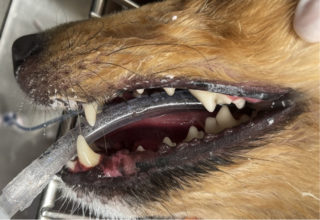
What is plaque?
Plaque is the first stage of dental disease and in animals is the pale yellow, light tan grimy film layer that coats the surface of teeth. Dogs, cats, pocket pets (and yes even humans!) that do not brush their teeth will accumulate this layer in a matter of hours. The composition of plaque itself is a mixture of microscopic food particles, saliva, oral bacteria, and minerals.
Plaque can in its earliest presentation be removed with regular toothbrushing. However if it is allowed to continue without proper dental care and removal it can form tartar.
This stage of dental disease is the most reversible and easiest to treat.
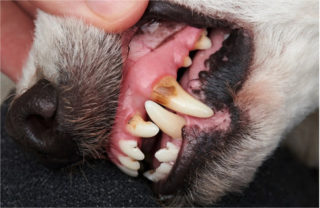
What is tartar?
Tartar is the next step in dental disease after plaque. It is plaque that has mineralised (calcified). Tartar can over time form continual layers on teeth and reach below the gum line to sit in the tooth socket. Tartar looks like a thickened brown film on the teeth with a craggy / raised ‘mountainous’ appearance. Because tartar is mineralised (and therefore very hard) it is not as amenable to tooth brushing for removal.
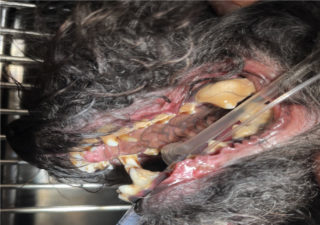
What is Gingivitis?
Once plaque and tartar are established on teeth and at the tooth / gum margin gingivitis will worsen. Gums are very sensitive tissues and chronic exposure to oral bacteria in plaque and tartar will cause a lot or redness, tenderness, inflammation, prone to bleeding with associated pain. It should also be remembered that red swollen, infected gums are more permeable to oral bacteria; which means that there is a higher chance of oral bacteria being absorbed into the bloodstream.
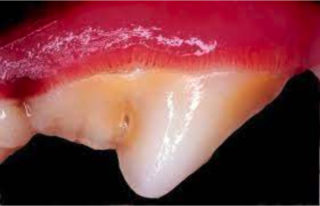
Tissues that can form bacterial inflammatory deposits include kidney and cardiac tissue. This may result in continual disease in these organs (example; kidney dysfunction or infections) or recurrent periods where your pet is unwell and “just not right”. The longer the dental disease continues untreated the more sickness episodes can be expected in our furry friends.
What happens with continual untreated dental disease?
End stage Periodontal Disease: Infected and loose teeth
Over time continual exposure of teeth and gums to bacteria will slowly erode the supporting ligament that holds teeth in place (the periodontal ligament); in time teeth will loosen and become mobile (wobbly) in their bony sockets. This increased gap in the space in-between the tooth and its socket allows further bacteria to sit in this space and accumulate.
In time the end stage of dental disease or “tooth decay” will become evident as teeth with pus around the gum / tooth margin with wobbly teeth that move whenever the pet eats.
Eventually the bony sockets of the upper and lower jaw that the teeth sit in become infected (osteomyelitis) with the bone changing into a more softer and fragile consistency.
Once the gums, teeth and mouth reach this later stage of dental disease it is often irreversible: meaning that dental cleaning and prophy treatments are recommended and instigated but these will not restore the teeth back to complete health and ongoing dental disease is expected in the future requiring ongoing care.
As expected this final stage of dental disease can be quite painful and reduce eating due to pain. Additionally brushing the teeth becomes more difficult due to the increased sensitively of the teeth to pain.
While plaque and tartar can often be seen by looking in your pet’s mouth, sometimes it can be hard to notice when you’re unsure what to look out for. As a general rule, don’t assume that your pet’s teeth are healthy without getting a pet dental health check and maintaining pet dental care.
Here are some common signs of dental disease:
- Bad breath
- Irregular/abnormal eating or drinking: eg. picking up food with their nouth then dropping it
- Broken/loose teeth
- Excessive drooling or pawing at mouth
- Bleeding from the mouth
- Teeth that are no longer white on the surface but are yellow or tan with a rough texture rather than a soothe surface
Benefits of Maintaining Pets Dental Health
By getting to it early, you minimise the likelihood of tartar forming and moving below the gum line and causing your pet serious pain and discomfort as a result of inflammation and infection.
Ensuring your pet receives proper dental care both at home and at the vet is vital. By practising proper dental care, pets are more likely to experience improved overall health that will help them in the years to come.
Pet dental health awareness month is the perfect time to book your best friend into your local veterinary clinic for a check-up.
At Clyde Veterinary Hospital, we provide dental health services for dogs, cats, rabbits, rodents and ferrets. We pride ourselves on treating animals in our state-of-the-art clinic and using gold standard service and dental equipment.
With dedicated dog and cat treatment areas, you can trust that your beloved pet will receive the highest quality, tailored care. We use the best pet dental care products and perform rigorous pre-anaesthetic testing to help ensure your pet receives the best treatment possible.
If your pet is showing signs of dental problems or you’d like to make sure your pet’s health is the best it can be, give us a call on 03 9052 3200 or make a booking online today.
What You Can Do?
Clean Their Teeth Regularly
Few pet owners take the time to give their animal’s teeth a regular or dedicated clean, but this is without question the gold standard in preventative care.
We strongly encourage the use of a dedicated species-specific toothbrush or “finger brush” which is a specially designed plastic overlay that you place over your finger and use to brush their teeth directly, and which gives much better tactile feedback and a better experience for your pet.
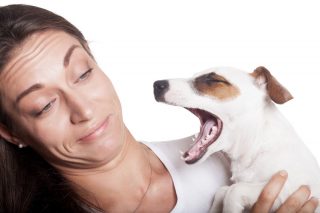
Using a dedicated dental paste is really the gold standard. Dedicated pet-specific formulations are available which have a palatable taste for pets, and which provide additional benefits such as mouth freshening and prevent plaque build-up.
We do recommend products such as Oxyfresh Pet Dental Gel, which is completely odourless and tasteless and made from natural ingredients.
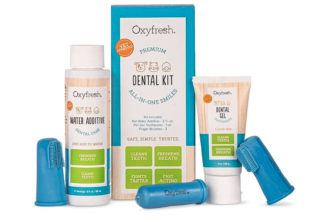
We DO NOT recommend using human toothpaste to clean your dog or cat’s teeth, as these can contain ingredients that can be harmful to dogs or cats if used over an extended period and in some formulations contain ingredients which can be toxic to pets.
It’s important that you remain committed to a daily process of brushing in order to maintain the benefits of a regular dental regime, and it’s important to quickly get your pet used to the somewhat unnatural process of having their teeth brushed.
Here are some tips for gradual introduction to tooth brushing for your pet:
- Start by gently lifting up your dog or cat’s top and bottom lip one side at a time and lightly rubbing their teeth with your finger once a day. Once they become used to this, you should begin use of the finger or tooth brush.
- Once your pet is used to you handling their mouth and rubbing their gums, use the finger brush (WITHOUT) toothpaste to rub the gums. Brush with gentle circular motions.
- Finally introduce a small blob of toothpaste to your pet onto their gums before applying this onto the fingerbrush. This will get them used to the taste of the toothpaste. Then apply the toothpaste to the finger brush and start gently brushing each row of teeth, top and bottom left and right using circular motions. Concentrate on cleaning the outside (cheek-facing) surfaces, as most pets will not allow you to brush the inside (tongue facing) surface of the teeth. Be sure to clean the back upper molars and canines, as these teeth tend to quickly build up tartar.
Be sure to reward them after their toothbrushing with play, petting or a favourite activity, to positively reinforce the brushing process
We recommend starting your pet out as young as possible while they are still puppies or kittens, as they will be far more receptive to brushing if you begin at an early age.
Use Specially Formulated Dental Dry Food
A number of dog and cat food manufacturers now make several varieties of dry food formula which has been specially designed to abrasively prevent the build-up of plaque or tartar on your pet’s teeth and gums.
At Clyde Veterinary Hospital, we strongly recommend Hills Prescription Diet t/d Dental Care for Dogs and Cats –
This diet features a specially formulated, species-specific kibble shape and size, with “fibre matrix technology” for maximum plaque reduction. Essentially the kibble biscuits clean the teeth just by the pet chomping them up and eating them!
Hills t/d comes in a formulation for cats as well as various sizes for dogs
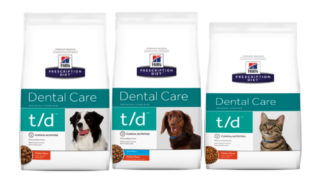
Use Dedicated Dental Chews
Similarly, several manufacturers make dedicated dental chew treats for dogs, which are a great-tasting way to supplement a daily brushing regime, and provide a little reward for putting up with the hassle of brushing.
Add a Specialised Dental Formula to Their Drinking Water
Oxyfresh have also come up with this extremely clever way of destroying bacteria and removing plaque – a dental additive solution you can mix in with their regular water – it’s completely colourless and odourless so they’ll never even know the good they are doing themselves every time they go to the water bowl – and it’s effective for both dogs and cats, or indeed any animal species.
We don’t recommend relying primarily on this as a preventative measure, but it can certainly help improve the effectiveness of a more hands-on dental care regime.
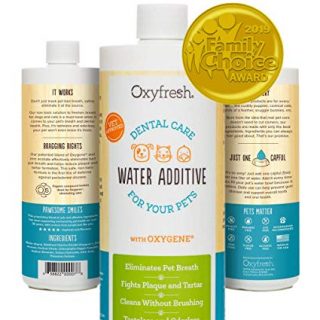
Give Dogs a Raw Bone
Although this is one preventative measure your dog will truly relish, we recommend exercising caution with this. Always supervise your pet when they are chewing a bone.
Importantly NEVER give your dog a cooked bone, as they are liable to splinter and can seriously injure your pet.
Always give your dog a human-grade meat bone (some preservatives used in inferior meats contain substances that can harm your dog), with enough meat still on to retain a degree of softness, and make sure the bone is large enough that they won’t attempt to swallow it.
Chewing on the bone’s rubbery surface can help remove plaque and tartar build-up and strengthen your dog’s gums, providing improved resistance to dental decay.
We recommend a maximum of 1-2 bones per week, and remember to try to leave a minimum 3 day gap between bone treats.
See Your Vet Regularly
This one may seem obvious, but it’s important that your pet has regular dental check-ups from an early age – you don’t want them having to live with a lifetime of tooth or other dental issues, which can lead to a loss of appetite, and restrict their enjoyment of life.
Only a professional dental check can properly diagnose and treat the often deeply hidden teeth or gum issues that can lurk deep within your dog or cat’s mouth.
Animals will also benefit from dental scaling, and your vet can advise if this would be appropriate and beneficial for your pet. Depending on the level of build-up, some dogs may need a yearly scale and polish.
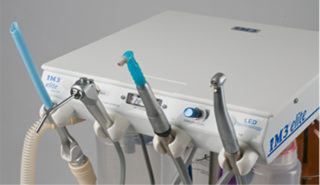
Ultrasonic scalers are handheld devices which use ultrasonic vibrations to remove hard, calcified deposits from your pet’s teeth. They also create shockwaves that disrupt bacterial growth, while also washing and flushing pockets between teeth and any exposed root surfaces with water.
The procedure is usually followed by a professional tooth polish, which smooths the surface of the tooth to minimise bacteria and plaque build-up.
We do strongly caution against any lay dental practitioners who claim to perform dental scaling free of anaesthesia. For starters, the procedure can be painful and distressing for your pet, but just as importantly – it’s been shown to be ineffective as a preventative measure – in most cases, your pet is simply not going to allow anyone to insert anything deep enough into their mouths to provide for a complete and effective clean.
A Team You Can Trust at Clyde Vet
We have a team of trusted veterinarians who are leaders in pet care.
We value preventative care to keep your pet healthy and endeavour to identify any concerns before they become a bigger issue.
Book an Appointment Today


